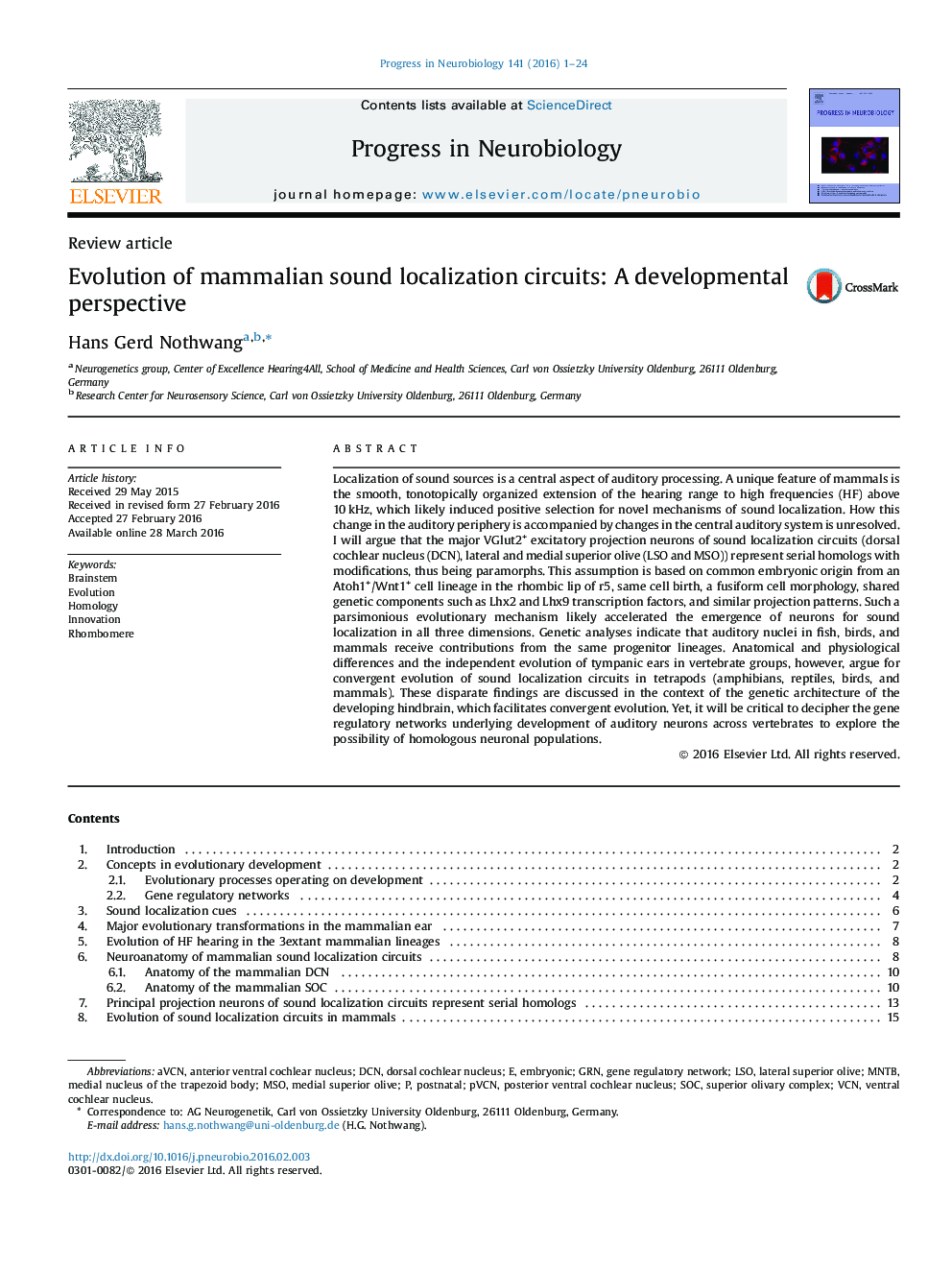| Article ID | Journal | Published Year | Pages | File Type |
|---|---|---|---|---|
| 4353233 | Progress in Neurobiology | 2016 | 24 Pages |
•Identifies the evolutionary trajectory of mammalian sound localization circuits.•Identifies major projection neurons of these sound localization circuits as serial homologs.•Identifies mechanisms for convergent evolution of sound localization circuits in different vertebrate groups.•Takes the first evo-devo perspective on the evolution of sound localization circuits.
Localization of sound sources is a central aspect of auditory processing. A unique feature of mammals is the smooth, tonotopically organized extension of the hearing range to high frequencies (HF) above 10 kHz, which likely induced positive selection for novel mechanisms of sound localization. How this change in the auditory periphery is accompanied by changes in the central auditory system is unresolved. I will argue that the major VGlut2+ excitatory projection neurons of sound localization circuits (dorsal cochlear nucleus (DCN), lateral and medial superior olive (LSO and MSO)) represent serial homologs with modifications, thus being paramorphs. This assumption is based on common embryonic origin from an Atoh1+/Wnt1+ cell lineage in the rhombic lip of r5, same cell birth, a fusiform cell morphology, shared genetic components such as Lhx2 and Lhx9 transcription factors, and similar projection patterns. Such a parsimonious evolutionary mechanism likely accelerated the emergence of neurons for sound localization in all three dimensions. Genetic analyses indicate that auditory nuclei in fish, birds, and mammals receive contributions from the same progenitor lineages. Anatomical and physiological differences and the independent evolution of tympanic ears in vertebrate groups, however, argue for convergent evolution of sound localization circuits in tetrapods (amphibians, reptiles, birds, and mammals). These disparate findings are discussed in the context of the genetic architecture of the developing hindbrain, which facilitates convergent evolution. Yet, it will be critical to decipher the gene regulatory networks underlying development of auditory neurons across vertebrates to explore the possibility of homologous neuronal populations.
